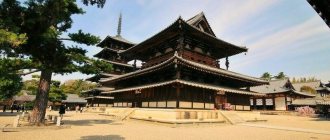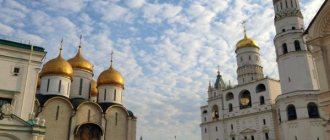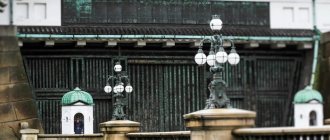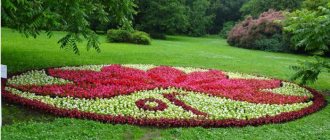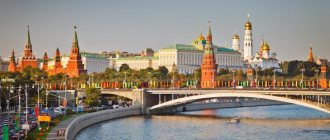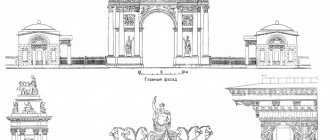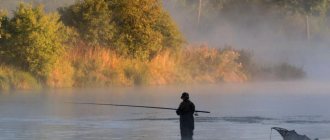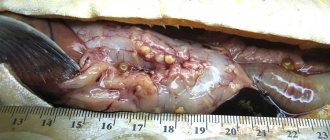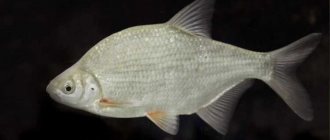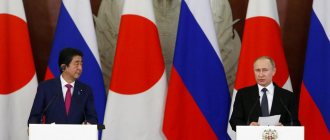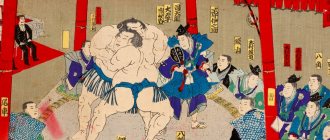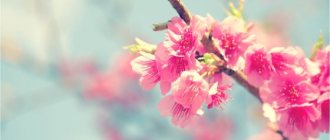Japan: Hokkaido Island
It is the second largest island in Japan. Its northernmost extreme point, like all of Japan, is Cape Soya, and the easternmost is Nosappu-Saki.
The closest neighboring island is Honshu, separated by the Sangar Strait. The waters of the Sea of Okhotsk wash its northern coast, the Sea of Japan - the western, and the Pacific Ocean - the eastern.
Honshu is an island larger than Hokkaido. Previously it was known under the names Hondo and Nippon. It makes up 60% of the area of the entire country. But only Hokkaido, which is one of the 4 largest islands of Japan, has best preserved its pristine nature. Approximately 10% of its territory is occupied by national parks (there are 20 in total). Therefore, Hokkaido is the center of eco-tourism.
The territory of Hokkaido Island has a total area of more than 83,453 km2. It is inhabited by 5,507,456 people (according to statistics for 2010).
What to see in Hokkaido?
- Blue Lake in Biei. Created by man, it is known for its incredible blue, which is illuminated on winter evenings and creates an even more unique atmosphere.
- Visit one of the many National Parks in Hokkaido. The island is famous for its untouched nature and you will not find such beautiful views as here anywhere else.
- Shikisai no Oka is a 15-hectare field where an unimaginable number of flowers bloom, which is why it shimmers with all the colors of the rainbow. These beauties are available from April to October.
- Port city of Hakodate. Beautiful city views, European architecture and delicious food will not leave anyone indifferent.
- The capital of the northern prefecture is Sapporo. This is where the country's best chocolate factory is located, Japan's best beer is made, amazing Japanese-European architecture and a market with the best seafood.
A Brief History of Hokkaido Island
The settlement of Hokkaido territories began about 20 thousand years ago. At that time, the Ainu lived here, one of the most ancient peoples of the Japanese islands. The history of the development of the Japanese island still holds a huge number of mysteries. The very first mention known to scientific researchers today was made on the pages of the Hon Shoki, a Japanese written monument dating back to the eighth century AD.
There is one fairly widespread theory according to which the island of Watarishima (which is discussed in this chronicle) is Hokkaido, which was named that way only in 1869.
The islanders (Ainu) in those days were engaged in fishing and hunting, and the trade relations that existed at that time with neighboring islands gave them the opportunity to provide themselves with rice and iron. Their peaceful, quiet life ended in the 14th-15th centuries, when the Japanese began to gradually populate the neighboring Oshima Peninsula (southwest of Hokkaido). This was aggressively accepted by the Ainu, leading to hostilities that ended in 1475 with the death of their leader. During the heyday of the reign of Prince Matsumae, whose territories were located mainly on the island. Oshima, the island of Hokkaido gradually became part of their possessions. And again, from that moment on, a long-term struggle broke out on the island between the local indigenous people and the Japanese. The Ainu rebelled until the 2nd half of the 18th century, but these actions did not bring any results. The Japanese confidently held the important island in their hands, especially since there was still a possibility of a Russian attack from the west.
In 1868-1869 in Hokkaido there was an independent republic of Ezo, which was proclaimed after the resettlement of thousands of military personnel to the island, who, after the first Japanese elections, elected the head of the republic, Admiral E. Takeaki. The emperor did not tolerate such arbitrariness in his territories, and in March 1869 the Ezo Republic was abolished and its head was convicted. There were also difficult times for the island in 1945, when its territories were subjected to terrible bombing. As a result, many cities and villages suffered greatly.
National level political decisions
Before considering the current state of Hokkaido and the challenges facing local authorities and government, let's look at the historical background of the emergence of the Hokkaido Governorate - a unit different from the prefectures and districts that make up the administrative-territorial structure of Japan. A system of government incentives for the development of the island appeared at the beginning of the Meiji era (1868-1912) in the form of the Hokkaido Development Commission (Hokkaido kaihatsushi). In the post-war period, Hokkaido was developed for the purpose of general economic recovery after defeat in the war. In addition, at an unofficial level, this island was given special political and military significance as Japanese territory where Japanese citizens lived, near the border with the Soviet Union.
In 1950, the Hokkaido Development Act was passed and the Hokkaido Development Agency was established as a ministerial body under a cabinet minister, and in 1951, the Hokkaido Development Bureau was established as a local central government agency promoting development measures. In 1956, the Hokkaido Development Financial Fund was created, and the following year it was reorganized into the Hokkaido and Tohoku Development Fund. In this way, the modern development support system for Hokkaido was basically formed. Parts of the pre-war system also remained, such as the pooling of various allocations in the Hokkaido development budget and preferential subsidies for projects related to the development of the region.
Speaking about government initiatives for the development of Hokkaido, it should be noted, firstly, the huge investments in enterprises for the development of Hokkaido, compared with the support of other regions, and the rapid increase in social capital in a short time. Secondly, the population of the region grew steadily from the end of the war until the 1990s. At the beginning of the Meiji period it was only 60,000 people, but by the end of the 20th century it had grown to 5 million 700 thousand people, which distinguishes Hokkaido from other remote regions of the country, such as northern Tohoku or southern Kyushu. Third, Hokkaido provided the entire country with resources necessary for its economy, such as food, coal and other fossil raw materials, and thus played an important role in the Japanese economy.
Relief, mined minerals
The island of Hokkaido has mostly mountainous terrain. More than half of the territory is occupied by mountains, the rest is covered by plains. Mountain ranges (Hidaka, Tokachi, etc.) are elongated in the submeridional direction. The highest point in Hokkaido is Mount Asahi (height 2290 meters). There are 8 volcanoes on the island, all of which are active. Earthquakes often occur here, as in Japan.
Coal, iron ore and sulfur are mined on the island.
Notes[ | ]
- S. V. Tkachev1, N. N. Tkacheva2 JAPANESE COLONIZATION OF HOKKAIDO (2nd half of the 19th - beginning of the 20th century)
- JAPANESE COLONIZATION OF HOKKAIDO (2ND HALF OF THE 19TH - BEGINNING OF THE 20TH CENTURY) Text of a scientific article in the specialty “History. Historical Sciences" Tkachev Sergey Viktorovich Tkacheva Natalya Nikolaevna
- Park Seung Eu. Problems of Sakhalin Koreans: History and Unresolved Issues
- City Population. — JAPAN: Hokkaidō
- Data from Statistics Japan
- Lessons from Hokkaido: rapid population decline and solutions to problems | nippon.com - Information about Japan
Cities and ethnic composition of the population
Hokkaido (prefecture) is administratively divided into 14 subprefectures. The capital of the island is Sapporo, which has a population of 1,915,542 people (according to 2010 statistics).
Sapporo is the largest city in Hokkaido. It is separated from the Kuril Islands by the Izmena and Kunashir straits.
The major cities of the island are Muroran, Tomakomai, Otaru. The ethnic composition is quite simple: Japanese - 98.5% of the total population, Koreans - 0.5%, Chinese - 0.4% and other nationalities (including Ainu) - only 0.6%.
History[ | ]
The history of Hokkaido Prefecture is different from that of the rest of Japan, just like the history of Okinawa Prefecture. Unlike Honshu, Shikoku and Kyushu, in Hokkaido and the surrounding islands during the 6th millennium BC. e. — In the 13th century there was a continuity of cultures. The autochthonous Jomon culture found its development in the post-Jomon culture. At the beginning of our era, it transformed into the Satsumon culture, whose carriers were the proto-Ainu. In the 13th century, the Ainu culture arose on the basis of this culture.
The first Japanese arrived in Hokkaido in the 12th century. They came from the southern island of Honshu. During the confrontation with the Ainu, the Japanese established power in the south of the island. In the 17th century, they formed their possessions into the autonomous principality of Matsumae, which depended on the central Japanese government - the Tokugawa shogunate. This khan traded with the Ainu.
After the Meiji Restoration in 1869, the entire territory of Hokkaido and the surrounding islands became objects of colonization by the Japanese. Modern colonization of Hokkaido began in 1870[1][2]. Areas closer to the main Japanese islands were settled by peasants, artisans, and impoverished samurai. Distant lands served as places of exile modeled on Russian Siberia or British Australia. The Japaneseization of Hokkaido was completed in the mid-20th century.
Until 1945, the Kuril Islands were included in the management system of the Hokkaido governorate[3].
Climate
The island of Hokkaido has climatic conditions that are somewhat different than other Japanese regions. Here the average annual temperature is only +8 °C. Due to its proximity to the Pacific Ocean, these places receive an average of only 17 full sunny days per year. But in summer, about 149 rainy days are recorded, and in winter, about 123 snowy days.
And yet, by Japanese standards, the summer climate on the island of Hokkaido is drier and the winter climate more severe than in other areas of the country.
And the concept of “north” in Hokkaido is quite relative. For example, the city of Wakkanai, located in the far north of the island, is located south of the city of Paris. In general, this island is considered the “harsh North” in Japan.
Facts about Hokkaido
- Although Hokkaido is an island, the island has a predominantly so-called "continental climate". This means that winters are cold and summers can be very hot.
- The island was until the 17th century isolated from the rest of Japan.
- The island has its own culture and indigenous population: the Ainu Mukhsiri
- In Hokkaido you will find some of the most beautiful and primitive areas in Japan. These places are very popular among winter sports enthusiasts.
Categories: Curious facts about the Japanese.
Views: 4,021
Share link:
- Tweet
- Share posts on Tumblr
- Telegram
- More
- by email
- Seal
Liked this:
Like
Attractions
What other interesting things can you see on the island of Hokkaido, besides the amazing unique nature? Reviews from travelers about this island, as well as about all of Japan, are the most positive.
There are several notable places in Sapporo: the clock tower of the same name is one of the few surviving buildings of the late 19th century in the American colonial style; a botanical garden with a preserved area of natural forest that once grew on the site of the city; Odori Boulevard; television tower (height 147 meters); Mount Moiwa 8 kilometers from the capital; beer museum (once a beer production factory); Nakajima Park.
The city of Hakodate has a five-bastion fortress (1864); Koryuji Monastery; Church of the Resurrection of the Lord and Momomachi Catholic Church; Higashi Honganji Monastery.
Hokkkaido has national parks: Shikotsu-Toya, Kushiro-Shitsugen, Akan, Shiretoko, Rishiri-Rebun and Taiseiuzan. Quasi-national parks - Hidaka, Abashiri, Onuma, Akkeshi Prefectural Natural Park.
Major cities[ | ]
The table shows all cities in Hokkaido with a population of more than 50 thousand people, sorted by population.
| № | Name | District | Population, people (October 1, 2015)[4] | Coordinates | Notes |
| 1 | Sapporo | Ishikari | 1 952 356 | 43°03′00″ n. w. 141°21′00″ E. d.HGЯOL | Capital of Hokkaido |
| 2 | Asahikawa | Kamikawa | 339 605 | 43°46′00″ n. w. 142°22′00″ E. d.HGЯOL | Administrative center of Kamikawa County |
| 3 | Haate | Oshima | 265 979 | 41°46′24″ n. w. 140°43′34″ E. d.HGЯOL | The administrative center of Oshima County |
| 4 | Kushiro | Kushiro | 174 742 | 42°59′00″ n. w. 144°23′00″ E. d.HGЯOL | Administrative center of Kushiro County |
| 5 | Tomakomai | Iburi | 172 737 | 42°38′00″ n. w. 141°36′00″ E. d.HGЯOL | |
| 6 | Obihiro | Tokati | 169 327 | 42°55′25″ n. w. 143°11′48″ E. d.HGЯOL | Administrative center of Tokati District |
| 7 | Otaru | Siribesi | 121 924 | 43°11′25″ N. w. 140°59′39″ E. d.HGЯOL | |
| 8 | Kitami | Okhotsk | 121 226 | 43°48′29″ n. w. 143°53′39″ E. d.HGЯOL | |
| 9 | Ebetsu | Ishikari | 120 636 | 43°06′14″ n. w. 141°32′10″ E. d.HGЯOL | |
| 10 | Chitose | Ishikari | 95 648 | 42°49′00″ n. w. 141°39′00″ E. d.HGЯOL | |
| 11 | Muroran | Iburi | 88 564 | 42°18′55″ n. w. 140°58′25″ E. d.HGЯOL | Administrative center of Iburi District |
| 12 | Iwamizawa | Sorati | 84 499 | 43°11′46″ n. w. 141°46′33″ E. d.HGЯOL | Administrative center of Sorati district |
| 13 | Eniwa | Ishikari | 69 702 | 42°53′00″ n. w. 141°35′00″ E. d.HGЯOL | |
| 14 | Kitahiroshima | Ishikari | 59 064 | 42°59′00″ n. w. 141°34′00″ E. d.HGЯOL | |
| 15 | Ishikari | Ishikari | 57 436 | 43°10′42″ n. w. 141°18′24″ E. d.HGЯOL |
Animal and plant life
The nature of Hokkaido is the main reason for tourists to visit it. Despite the large number of industrial enterprises, the government managed to preserve natural resources. Approximately 70% is forested. Coniferous trees grow in the northern part; they are represented by spruces, cedars, and firs. Broad-leaved trees grow in the southern part. Bamboo is also widespread in Hokkaido.
The fauna is quite diverse. It has the largest population of brown bears in Asia. The island is inhabited by stoats, sables, and foxes. Local lakes are full of fish, and in the spring many birds come here. One of the local residents is a flying squirrel called "Ezo Momonga", which can only be found in Hokkaido.
